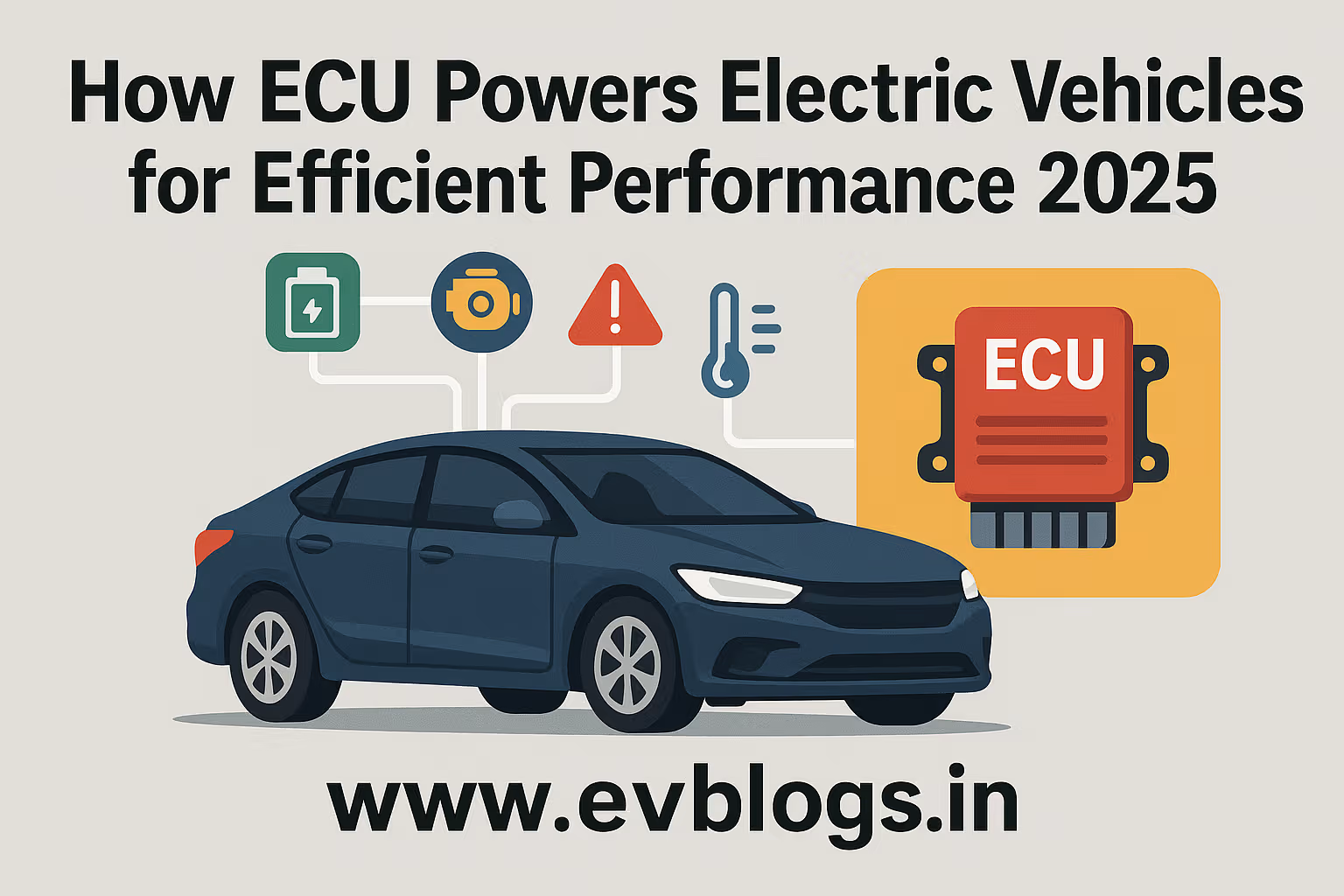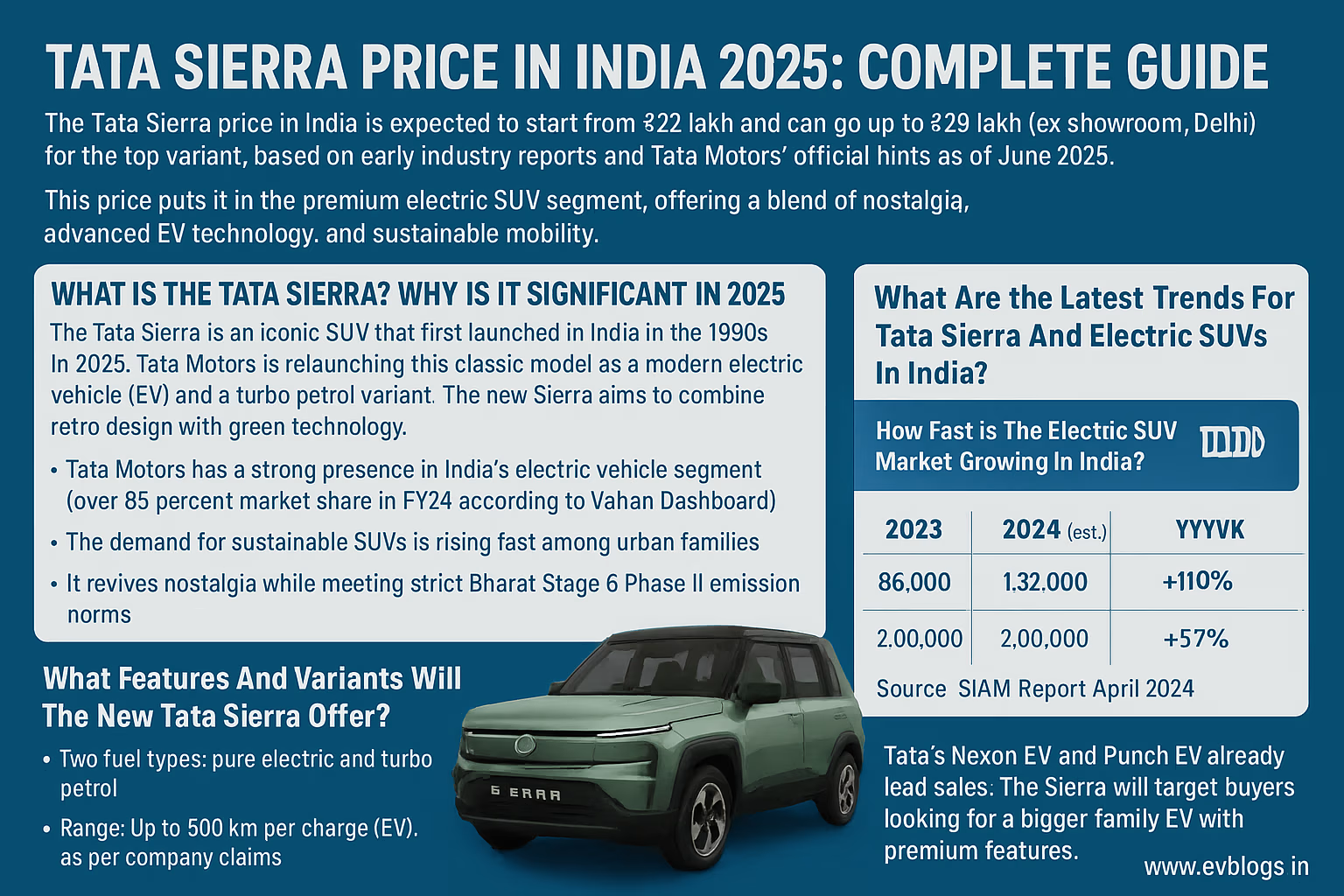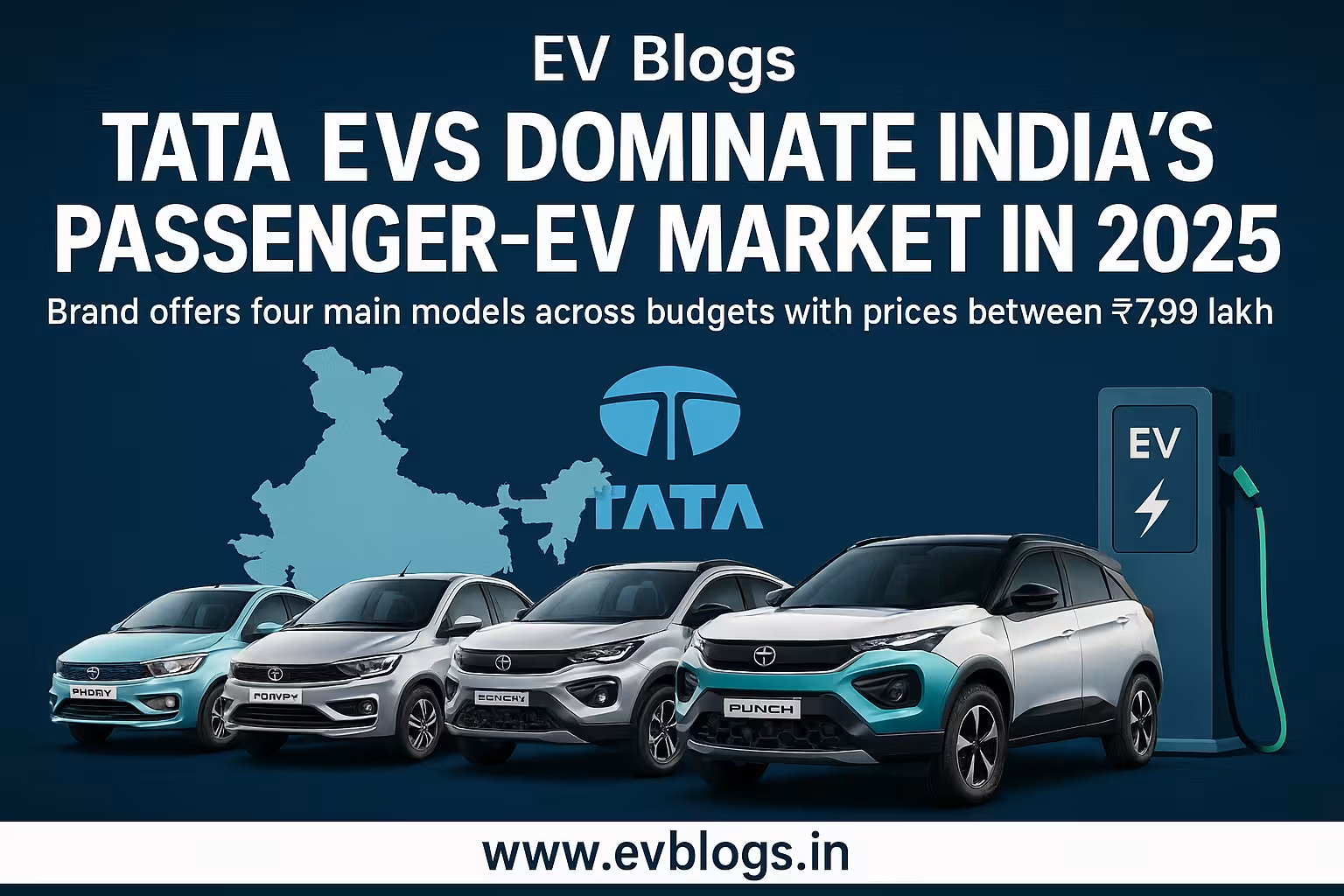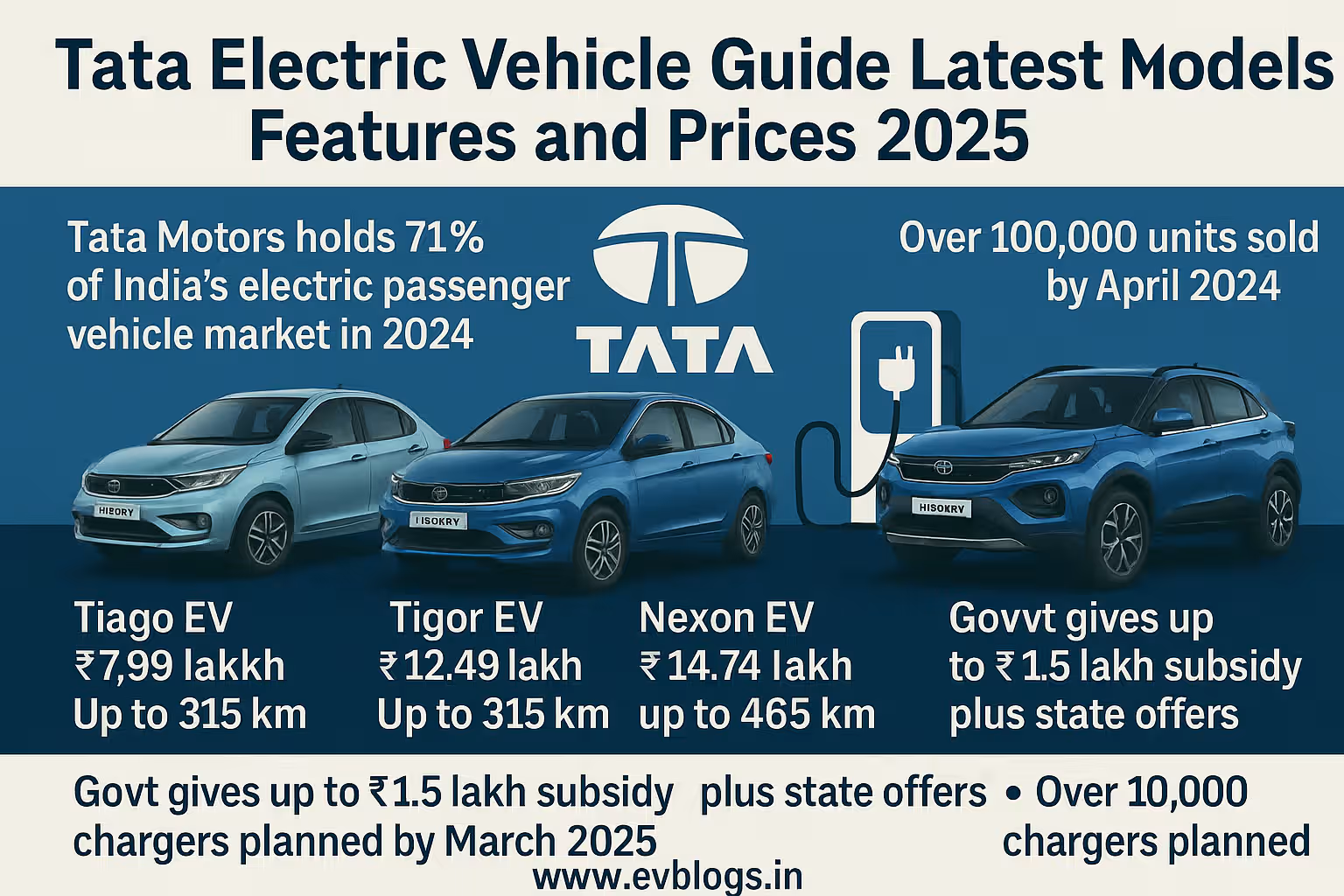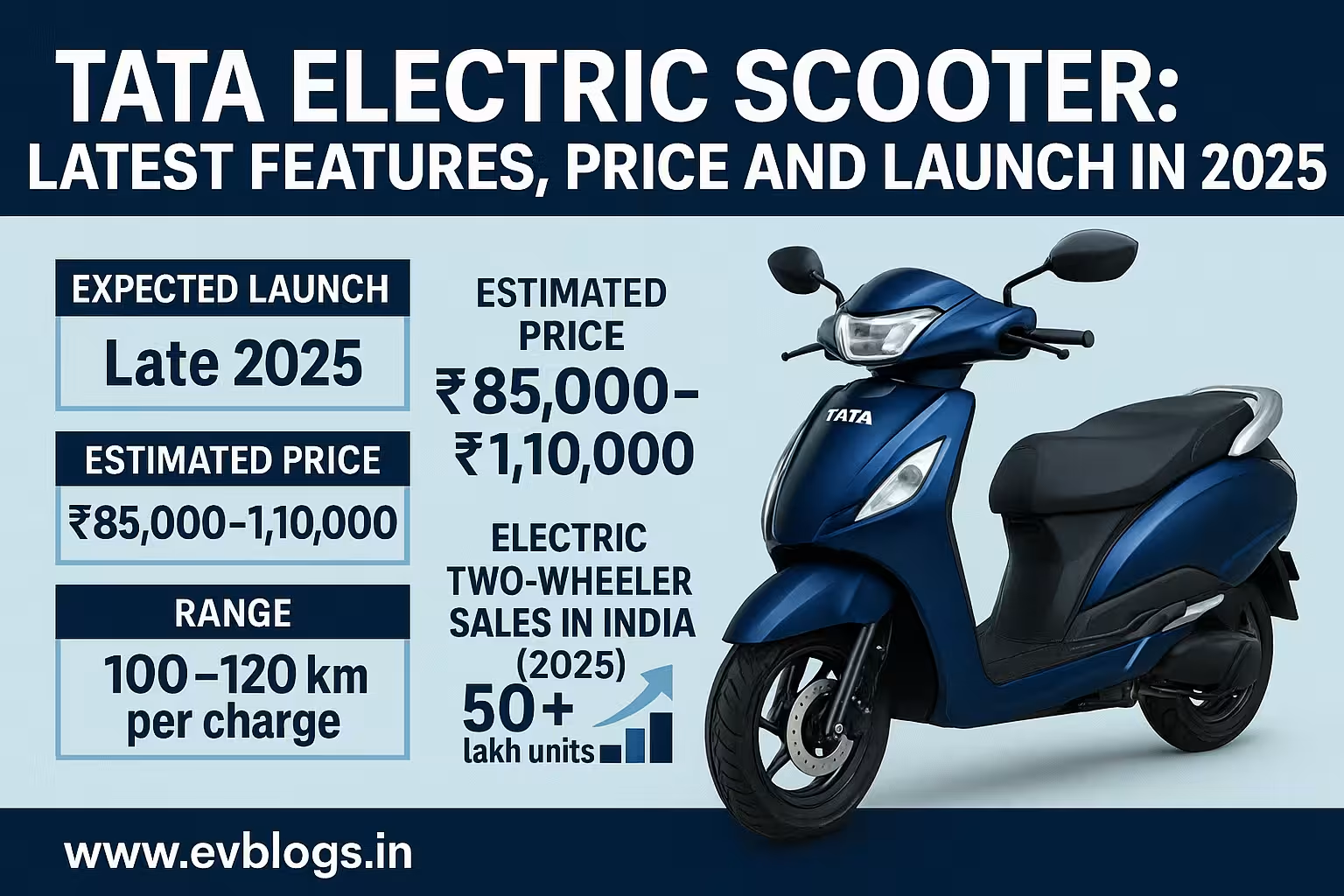Hedhvick Hirav
Hedhvick Hirav is a dedicated EV researcher and editor with over 4 years of experience in India’s growing electric vehicle ecosystem. Their contributions have been recognized in leading sustainability publications and automotive journals.
Summarize & analyze this article with
Choose an AI assistant and open this article directly:
Tip: if the AI doesn’t fetch the page automatically, paste the article URL manually.
What is Home EV Charger Installation and Why is it Important for India in 2025?
Setting up a home EV charger means installing a dedicated charging point at your home so you can conveniently recharge your electric vehicle (EV) overnight or whenever you want. In 2025, with EV adoption rapidly increasing in cities like Bengaluru, Delhi, Mumbai and even Tier-2 towns, a home charger is becoming a must for new EV owners in India.
You might wonder why you can’t rely only on public charging stations. The answer is simple—public charging is still limited in many Indian cities, may have waiting times, and often has higher per unit tariffs. Home charging allows you to plug in your EV just like you charge your phone: overnight, safe, cost-effective, and at your convenience.
- Home EV charging enables you to start every day with a fully charged vehicle.
- You avoid the hassle of searching for public chargers.
- Saves you money on charging tariffs compared to public fast chargers.
- Enhances safety by using approved, dedicated devices—reducing risks of overloading or short-circuiting.
- Some chargers offer app-control and scheduling, great for taking advantage of night-time electricity rates.
Did You Know?
According to NITI Aayog estimates, India’s electric vehicle market is projected to grow at a CAGR of 49% between 2022 and 2030. By 2025, over 15 lakh EVs are expected to be sold in India, with the majority being home-charged.
Who Should Consider Installing a Home EV Charger in India?
Not every EV user will need a home charger, but for most Indian EV buyers, it’s a major benefit—if not a necessity. You should especially consider it if:
- You own or are planning to buy an electric car, scooter, or commercial EV.
- You have dedicated parking in a society or independent home.
- Your daily commute is more than 20-30 km, so overnight charging matters.
- Your city or locality does not have many reliable public EV charging stations nearby.
- You want to use cheaper domestic electricity rates, which cost about ₹7-10 per kWh, versus ₹18-25 per kWh in public fast charging stations (as of early 2025).
- You wish for the convenience, control, and security of charging your vehicle at home.
Real-Life Story:
Mr. Krishnan, a software engineer in Pune, installed a 7.2 kW AC wallbox at home. He says, “I never worry about battery range anymore. My Tata Nexon EV is always ready in the morning, and I pay only around ₹9 per kWh, which is less than half of fast chargers in Pune.”
When is the Right Time to Install a Home EV Charger in 2025?
A common question is: should you install your home charger before or after your EV is delivered? Here are some scenarios to help you decide in 2025:
Most car dealerships now offer bundled home charger installation during or soon after vehicle delivery.
If your society or home requires permissions, start the process at least 2-3 weeks before expecting your vehicle.
If you plan to upgrade your charging capacity (for faster AC or DC charging), arrange for a licensed electrician visit post-possession of your car and parking alignment.
Planning for solar-powered charging? Set up your solar panel system in advance to maximize benefits.
For early adopters in new residential complexes, applicant societies can negotiate group installations for better pricing and standardization.
When buying a new EV, inform your builder or Resident Welfare Association (RWA) as early as possible.
Existing EV owners should schedule upgrades before summer (high electricity use) to avoid delays.
Expert Insight
According to the Ministry of Power’s 2025 update, most RWAs and gated societies are now mandated to allow installation of EV charging points, provided wiring and safety norms are met.
Which Home EV Charging Options Are Available in India in 2025?
India’s EV charger market has expanded rapidly by 2025. There are various charger types suited for home use, depending on your vehicle, charging speed needed, budget and power connection at home.
Types of Home Chargers Available:
- Level 1 (3.3 kW) Portable Charger
Usually provided free by car manufacturers. Plugs into a regular 15A socket. Slow charging, best for overnight or backup use only. - Level 2 (7.2 kW) AC Wallbox Charger
Fixed, wall-mounted charger with faster charging; ideal for daily home use. - Fast AC/DC Chargers (15-22 kW or above)
Less common at homes due to high costs and power needs; sometimes seen in premium villas or fleet operators.
Popular Home Charger Brands in India (2025):
| Brand/Model | Charging Power | Suitable for | Smart Features | Approx. Price (2025) | Provider Contact | Warranty | Installation Support |
|---|---|---|---|---|---|---|---|
| Tata Power EZ Home | 7.2 kW | Cars, SUVs | App Control | ₹55,000 | Nationwide | 2 Years | Yes |
| Ather Dot | 3.3 kW | 2-wheelers | No | ₹12,000 | Metro Cities | 1 Year | Yes |
| ABB Terra AC 7 | 7.4 kW | Sedans/SUVs | Yes | ₹68,000 | Pan India | 2 Years | Yes |
| Okaya Fast Home | 7.2 kW | All cars | Yes | ₹48,000 | NCR, Major Cities | 2 Years | Yes |
| Exicom Harmony | 7.4 kW | SUVs | App/OTA | ₹60,000 | Pan India | 2 Years | Yes |
| Magenta ChargeGrid | 7 kW | Cars | Yes | ₹46,000 | Pan India | 2 Years | Yes |
| Delta AC Mini | 7.4 kW | Premium Cars | Yes | ₹82,000 | Select Cities | 2 Years | Yes |
| BESCOM Ojas | 3.3 kW | Public/small | No | ₹20,000 | Karnataka | 1 Year | Yes (in KA) |
| Charge+Zone Home | 7.2 kW | All cars | App | ₹50,000 | Western India | 2 Years | Yes |
| Amara Raja Instacharge | 7.2 kW | Sedans | App Control | ₹52,000 | South India | 2 Years | Yes |
Description & Details
- Tata Power EZ Home: Strong after-sales, wide service in metros, works with all major EVs including Tata, MG, and Hyundai.
- Ather Dot: Designed for Ather scooters, easy repair, affordable for two-wheeler users in cities.
- ABB Terra AC 7: European tech, quality build, smart controls, little more expensive but reliable.
- Okaya Fast Home: Growing in popularity, smooth app, local support in NCR.
- Exicom Harmony: Remote monitoring, over-the-air updates, robust for SUVs.
- Magenta ChargeGrid: Well-known for clear billing, good for societies.
- Delta AC Mini: Premium pick, maximum power for higher-end EVs.
- BESCOM Ojas: Budget-friendly, basic features, exclusive to Karnataka.
- Charge+Zone Home: Seamless app, decent pricing, available in multiple states.
- Amara Raja Instacharge: Emerging brand, strong service network in South India.
Did You Know?
Tata Power has already installed over 30,000 home EV chargers across India by the end of 2024, with a target of 1 lakh installations by 2025.
How Much Does Home EV Charger Installation Cost in India in 2025?
Cost is a vital factor for most Indian EV buyers. Let’s break it down:
Expected Price Ranges
- Basic (3.3 kW portable):
- Charger: Often free with EV purchase
- Extra cable/wiring: ₹2,000 - ₹5,000
- Installation: ₹1,500 - ₹3,000
- Wall-mounted (7.2 kW - 7.4 kW):
- Charger: ₹40,000 - ₹85,000
- Intelligent, app-based chargers are at the higher end
- Wiring, safety MCBs, conduit: ₹6,000 - ₹15,000
- Total typical cost: ₹55,000 - ₹1,00,000 (all included)
- Faster AC/DC (15 kW+):
- Not common for regular homes due to high cost (₹1.5 lakh+), high power draw permits required
What’s included in the cost?
- On-site electrical inspection and load assessment
- Supply and installation of wiring, MCB, RCD (for shock protection)
- Charger unit with mounting supports
- Commissioning and basic tutorial for users
Any extra costs?
- Parking modifications, if your slot is far from the meter
- Upgrading domestic load (contact your DISCOM for sanctioned load increase; charges vary by state—₹2,000 to ₹10,000)
- Annual maintenance is rare; occasional service costs (~ ₹1,000/year)
Expert Insight
Some new housing complexes in cities like Hyderabad and Pune now offer EV-ready parking, with wiring and points pre-installed at no extra charge. Ask your builder for “EV-friendly” units!
How Do You Choose the Right Home EV Charger in 2025?
This is a crucial decision! The right charger depends on your EV’s battery, your parking type, budget, and future needs.
Consider These Factors
- Vehicle compatibility: Make sure the charger suits your car’s make/model and plug type (most Indian EVs use Type 2 connectors).
- Charging speed: Larger battery EVs (like MG ZS EV, Tata Nexon EV Max) benefit from 7.2kW chargers, while small EVs or scooters are fine with 3.3kW.
- Power supply at home: Check with your DISCOM on maximum safe load; some older buildings may need upgrades.
- Smart features: Do you want app control, scheduled charging, or remote monitoring?
- Brand reputation & support: Choose brands with proven after-sales in your city.
- Warranty: At least 1-2 years is standard in 2025.
- Upgradability: Opt for chargers that could support future cars.
- Installation support: Choose a provider offering certified installation experts.
Pro Tips
- In flats/society parking, ensure RWA permission and written approval for wiring routing.
- Ask for a demo of the smart features before finalizing.
- Request installation at a spot protected from rain and direct sunlight.
Did You Know?
More than 70% of Indian EV buyers prefer a wall-mounted AC charger with remote monitoring, showing a clear shift towards smart charging in 2025.
What is the Step-by-Step Home EV Charger Installation Process?
Getting your EV charger installed can seem technical, but with the right steps, it’s simple:
The Standard Installation Process:
- Step 1: Site Survey
- An electrician or provider expert visits, assesses your parking, power meter location, and optimal wiring route.
- Step 2: Approvals
- In societies/flats, get RWA written approval for wiring. In independent homes, permission from the local municipal body isn’t usually required.
- Step 3: Equipment Procurement
- Order the charger model with installation accessories (conduit, MCB, cable, etc.).
- Step 4: Power Load Check
- Verify if your meter can handle the extra load (preferably a 3kW+ sanctioned load for a 7.2kW charger).
- Upgrade domestic connection if needed—application via local DISCOM.
- Step 5: Installation
- Certified installer mounts the charger, lays wiring, fits safety MCB/RCD.
- Step 6: Testing
- Thorough check for voltage, connectivity, earthing, and network (smart chargers).
- Step 7: Handover
- User demo—how to plug, unplug, schedule charging, safety do’s and don’ts.
User Story:
Ms. Rubina in Bengaluru narrates, “The process took 4 days—1 for site survey, 1 for society approval, and 2 for actual installation. The technician explained app scheduling; now I charge my Tiago.ev at night when electricity is cheapest.”
Expert Insight
For societies, common EV charging infrastructure can lower costs (shared wiring) and allow for split billing per user—a trend catching up in 2025.
What Are the Safety and Legal Requirements for Home EV Charger Setup in India?
Safety is the top-most concern, both for your home’s wiring and family safety. In 2025, Indian authorities have rolled out guidelines to reassure you:
Key Safety Standards:
- Use only BIS/IS certified chargers and cables (mandated since mid-2024)
- Proper earthing is non-negotiable—avoid running chargers off kitchen or AC wiring!
- Dedicated circuit breaker (MCB) and leakage detection (RCD) fitment is a must
- Weatherproof installation for open/covered parking areas
- Avoid daisy-chaining (multiple appliances on same socket)—use a single, dedicated line
Legal/Compliance Aspects:
- Installation by a licensed electrician or provider-assigned technician only
- RWA/society permission for shared spaces; written record helps
- In case of supply upgrade, you must notify your state DISCOM in writing
Did You Know?
The Central Electricity Authority (CEA) published new “Guidelines for EV Charging Infrastructure” in 2024, specifying mandatory installation practices for safety.
How Long Does It Take to Install a Home EV Charger in India?
Timelines vary, but most installations in 2025 finish within 3-7 working days after order confirmation—faster than ever thanks to growing EV demand and better-trained teams.
Typical Time Frame:
- Site assessment: 1-2 days
- RWA/society approval (if needed): 1-5 days (can run parallel)
- Installation & commissioning: 1 day (for skilled installer)
- Meter/load upgrade: 2-5 days (if needed, handled by DISCOM)
Delays may occur due to:
- RWA permissions in older societies
- Festive or public holidays
- Waiting for DISCOM for load upgrades during peak seasons
Most major charger providers (like Tata Power, Okaya, Exicom) commit to completing installation in metro cities within a week of order, barring exceptional cases.
Expert Insight
Hyderabad’s Banjara Hills area saw average home charger installation times drop from 12 days in 2023 to just 5 days in early 2025.
How Does Home EV Charging Compare with Public Charging for Indian Users?
Many first-time EV buyers wonder if home charging is really necessary in 2025, given rising public charging networks. Here’s a direct comparison.
| Feature | Home EV Charging | Public Charging |
|---|---|---|
| Avg. Cost per kWh (2025) | ₹7-10 | ₹18-25 |
| Convenience | High (overnight at home) | Moderate (travel, wait time) |
| Control | Full (schedule, monitor) | Low (sometimes waiting) |
| Speed | 3.3 - 7.4kW (AC) | Up to 50kW+ (DC Fast) |
| Upfront Cost | ₹40,000 - ₹1,00,000 | NIL (per session fee only) |
| Access | Always available | May be occupied/remote |
| Maintenance | User responsibility | Operator’s responsibility |
| Safety | High (known quality) | Varies by operator |
In-depth Notes
- Cost: Home charging is typically 60% cheaper than public fast charging in Indian cities in 2025.
- Speed: Public chargers are useful for emergencies or long trips, but overnight home charging is enough for daily commutes.
- Access: Metro cities have seen public network expansion, but charger uptime and availability can be an issue, especially in apartments.
Did You Know?
A typical home charger adds 20-30 km range per hour for most Indian EVs. That means you wake up to 200-300 km full range every morning without any trips to a petrol pump or charging station!
Which Indian Cities Support Easy Home EV Charger Installations in 2025?
Major Indian cities have adapted to growing EV needs. As of early 2025, the following cities have the best support:
- Bengaluru: Robust DISCOM support, pro-EV builder policies, Tata Power and BESCOM are leaders.
- Delhi NCR: Both Tata Power and BSES offer streamlined application and permit processes.
- Hyderabad: New apartments with EV-ready parking, and GHMC solar-of EV policies.
- Mumbai, Pune: Wide network of service providers, quick approvals in most societies.
- Chennai & Kochi: Builder-driven growth, Ather and other two-wheeler focused installations.
- Ahmedabad, Surat: State government subsidies and support for charging infra.
Special notes:
- Smaller cities are catching up—especially where new housing complexes are being built with “EV-ready” infrastructure.
- Tier-2 and Tier-3 towns may have slower RWA approvals or power connection upgrades—check with your DISCOM in advance.
- In hilly/remote regions, solar-powered home chargers are picking up as an eco-friendly solution.
Expert Insight
Some cities like Pune and Bengaluru now require new residential projects to designate a minimum percentage of parking spots as “EV ready”—so the wiring and panel space can support future EV buyers.
What Are Some Common Home EV Charger Installation Problems and Solutions in India?
While installing your home EV charger is largely straightforward in 2025, some users still face hurdles. Here’s how to spot and solve them:
Common Challenges & Their Solutions
- RWA/Society Delays:
- Approach your RWA early with government guidelines, offer to share installation cost for common wiring if multiple users are interested.
- Insufficient Power Supply:
- Apply for a sanctioned load increase before ordering your charger.
- Waterlogging or Outdoor Parking:
- Use weatherproof (IP65+) chargers and covers. Concrete poles for safe mounting in open lots.
- Charger Wi-Fi/Connectivity Issues:
- Ensure router coverage extends to parking area; use hardwired LAN for stability.
- Uncertified Installers:
- Always use licensed electricians; untrained installers void warranty and risk safety.
User Story:
Mr. Suresh in Ahmedabad couldn’t get society approval after 3 attempts. He joined hands with two other EV owners, presented RWA with CEA 2024 guidelines, and got collective permission—splitting wiring costs three ways.
Did You Know?
Over 85% of Indian EV home charger installations in 2024-25 succeed on the first attempt when owners provide proper documentation and use authorized brands.
How Can You Maintain and Get the Best Performance from Your Home EV Charger?
Like any electronic device, basic care ensures your charger works perfectly year after year.
Simple Maintenance Tips
- Keep the charging port clean and covered when not in use
- Check the MCB/RCD for any tripping after power cuts or heavy rains
- Inspect cables for cuts or wear every few months
- Update charger software/app for bug fixes and new features (for smart chargers)
- Don’t overload the socket by running other high-power appliances on the same circuit
Most modern chargers require minimal maintenance. Still, keep your provider’s helpline handy for any malfunction. Annual service visits are recommended before summer (peak usage period in India).
Expert Insight
A study conducted by Magenta ChargeGrid in 2024 found that homes with basic surge protection and timely software updates had 97% fewer charger malfunctions than those without.
Conclusion: Making an Informed Choice on Home EV Charger Installation
By 2025, installing a home EV charger in India is no longer a luxury; it’s a practical step for anyone serious about owning and enjoying an electric vehicle. With costs coming down, strong government support, and top brands offering safe, smart solutions, you can charge comfortably at home, save on fuel, and enhance the lifespan of your EV.
Most Indian cities and even many Tier-2 towns now support easy installations. The process, while involving a few permissions and upfront investment, pays off through years of savings and unmatched daily convenience. Ensure your installation follows safety standards, is future-ready and suits your specific EV needs—whether two-wheeler, sedan, or SUV.
Ready to electrify your drive? Home charging is the smartest way to power your future in 2025!
FAQs (2025)
Q: Can I use my existing 15A socket daily for EV charging at home?
A: While possible for small EVs or backup purposes, it is recommended to use a wall-mounted dedicated charger for regular daily charging, safety and long-term convenience as per 2024-25 CEA norms.
Q: Are there any government subsidies for home EV chargers in India in 2025?
A: Some states like Delhi, Maharashtra, and Karnataka offer partial reimbursement for charger installation—check with local authorities for eligibility. Central government is considering additional benefits in 2025.
Q: How do I increase my home’s electricity load for a higher power charger?
A: Submit an application to your state DISCOM (electric utility) with your meter number, expected load, and purpose. Most urban DISCOMs process upgrades within a week.
Q: Can renters in apartments get permission to install home EV chargers?
A: Yes, as per the Ministry of Power guidelines (2024), RWAs cannot arbitrarily deny tenants the right to install EV chargers provided safety norms are met and written permission is obtained.
Q: What maintenance does my home EV charger need?
A: Minimal—mainly periodic inspection of cables and MCB/RCD, cleaning ports, occasional software updates, and ensuring no visible damage after extreme weather.
This guide is designed to save you hours of research and help you take the next confident step in India’s electric future. If you have more questions, consult your vehicle’s manufacturer, electricity provider, or certified EV charger installer for the latest personalized advice.


